Choosing the ideal tire-setup in your ATV for the winter season is not always easy. Neither chains nor studs are the perfect solutions for all winter conditions. I’ve taken a closer look at the pros and cons of both so you better can decide what suits you the best.
So who’s the overall winner in the “ATV chains vs. studs” showdown? Chains are generally better for all-purpose low-speed use on ice and snow, such as plowing and hauling firewood. Studs are better for high-speed ice racing and trail riding. Studs add minimal traction in the snow, where chains work well in moderate depths.
Let’s have a closer look at the different parameters you should consider when deciding which is better for you. For some, it’s more important not to scratch the driveway, while for others, it’s the off-road performance that matters the most. That’s why I cannot decide for you. But I can help you make an educated decision by shining a light on what to expect from each of the two competitors.
Chains do cost more than a bag of studs. A good set is about 150-250 dollars, while you can get studs for 50-100 dollars.
But if you don’t want to leave the studs installed all year round and do not want to spend a lot of time removing and replacing them between the seasons, you may need to invest in one extra set of rims and tires to accommodate the studs.
On the other hand, the chains also usually come with the cost of a set of wheel spacers that will set you back about 100-200 dollars more.
Winner: Studs (if you leave them in all year round)
If you want to avoid scratches in your driveway at any cost, neither chains nor studs are the ideal choices for you. None of them will do any real damage when you roll freely over the surface.
But as soon as we hook up a snowplow, and take into consideration that the surface may not be completely level, the risk of spinning tires increases. And this is where scratches occur.
And this is where scratches occur.
If you are careful not to spin your tires, you should be able to get through the winter without making too much damage to your asphalt or concrete driveway. But you can’t avoid scratches altogether.
Chains will make deeper scratches simply because they are beefier.
Simultaneously, studded car tires are getting banned worldwide, mostly due to the unwanted dust they create in city centers. When the number of cars passing through is high enough, even the small studs on studded car tires will wear down the road.
Winner: Studs
The chains do offer excellent traction on ice, no doubt about it. ATV does, however, have the disadvantage of being relatively lightweight. Because of this, the chains won’t penetrate the ice as deep as needed for optimal grip.
To counter this, you can get V-bar style chains, or even better: diamond-shaped chains with some beefy studs.
The diamond shape has the additional benefit of reducing the chain’s risk of falling in between the tire lugs, where it won’t do much good.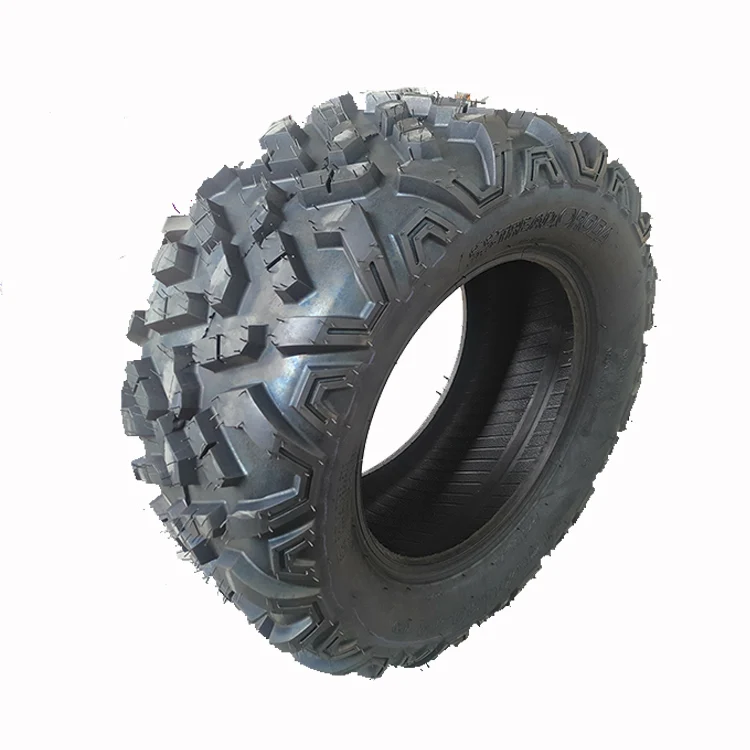
A chain made out of square steel will also give a better grip than one made of round steel.
These diamond-shaped chains made out of square metal work great on my Sportsman.Studs, on the other hand, are purposely made to have an excellent grip on ice. To be more specific, they were initially created for and are still used mostly in ice racing. In ice racing, you are looking for the best combination of high speed and excellent grip.
With the right setup, you can achieve a grip so good that you almost forget you are riding on ice and not on asphalt.
Beefy studs give you excellent grip on ice.How much traction you get can be adjusted by how many and what length of studs you are using. The screw-in style studs are slimmer than the studs you find on chains so that they will penetrate the ice better.
With the ability to regulate how many studs you install, you can also test and find the number of studs that give you the best grip according to your bike’s weight. More is not always better because the more studs you add, the less they will sink into the ice.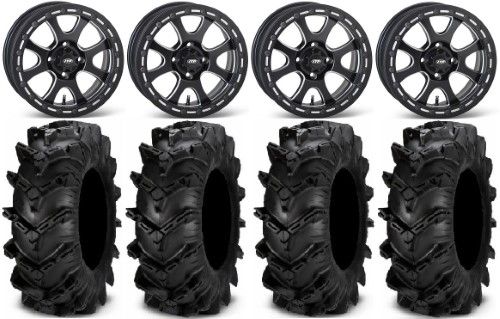
Adding weight to the bike is always a solution with both chains and studs if you need even better traction. But for obvious reasons, dragging along a couple of sandbags is less desirable for racing or trail riding purposes.
Winner: Studs
So we’ve established that studs work well on ice. But for studs, the fun stops here. With just a small layer of snow on top of the ice, they will no longer be able to dig into the ice, and the tires will start slipping.
It’s worth noting that the purpose of tire studs is often misunderstood; they are only meant for ice and nothing else. On snow, they have little to no effect. On super packed hard snow, the longer studs will work to some degree, but not by much.
Chains work great in moderate depths of snow, but they will dig in and leave you high centered on the belly pan when snow depths get extensive.
Your best chance with wheels in bottomless snow is getting a set of tires with massive paddle-shaped lugs and applying full throttle to increase wheel speed. This strategy works better in these conditions than any average tire with tire chains. You cannot achieve the required wheel speed when using chains.
This strategy works better in these conditions than any average tire with tire chains. You cannot achieve the required wheel speed when using chains.
Again, we’re talking about playing in deep snow here, not utility work in moderate amounts of compact snow. For the latter, chains are much better, only beaten by tracks.
Those who want to utilize tire speed to get traction when playing in the snow can install studs to keep the ride manageable when riding in on icy surfaces. This will reduce the chance of sliding down a snowy hill or spinning off the road.
When small enough studs are used, some even like leaving them in all year round.
Winner: Chains
Related: How to Install ATV Tire Chains (Diamond and Ladder Style)
Whenever riding on surfaces with no ice or snow on them, you will find that both studs and chains will reduce your grip compared to running with straight ATV tires.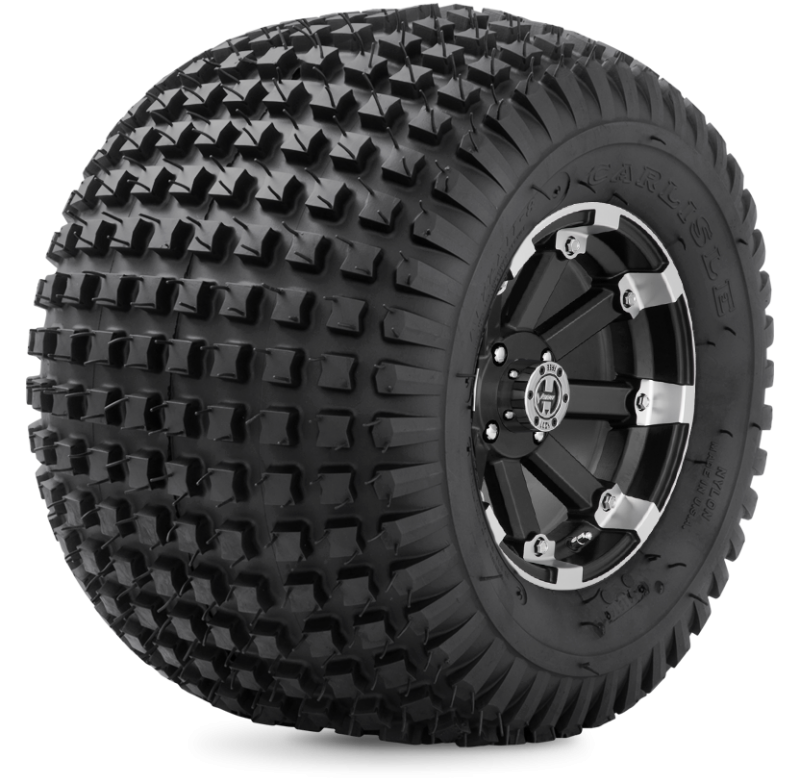
The chains are so thick that it’s mostly metal that touches the ground and not the tire’s rubber.
Metal is hard, smooth, and needs a soft surface; it can dig into to be effective. When you ride on hard surfaces, you will only slide around while damaging the surface you are riding on and wearing your chains.
Studs can be a bit better as long as you don’t install studs that are too long. This will allow some of the rubber to contact the surface still, making them the better option of the two when riding on hard surfaces.
Winner: Studs
Studs will not wear your bike, but they will tie up a set of tires. Some choose to remove all of the studs when spring comes, leaving a scarred tire.
In practical use, this doesn’t matter much, but the cuts made by aggressively threaded studs may increase the chance of tire lugs coming loose when riding in the summer.
Chains will also wear your tires to some degree because they are more rigid than rubber.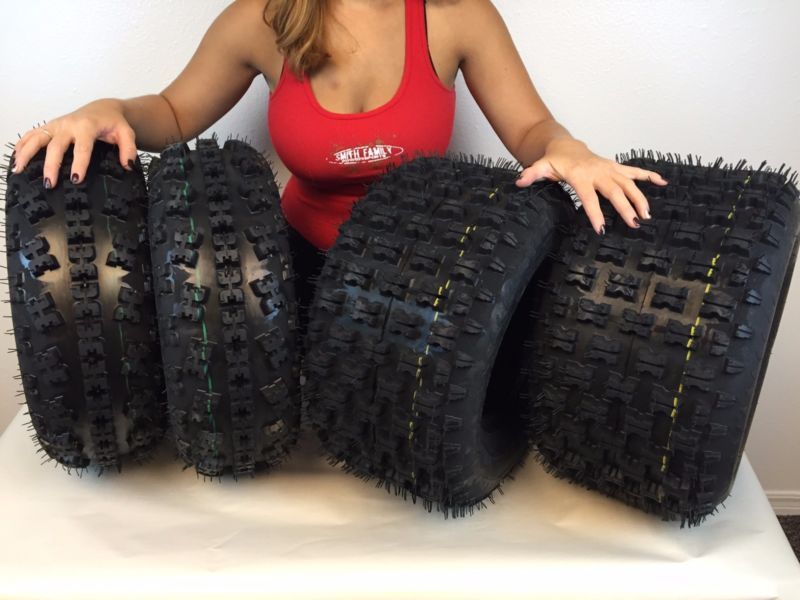 But the real damage is caused when they come loose, break, or when the chains are installed less snug than they should. A sloppy chain-link cathing your brake line will rip tear it open instantly.
But the real damage is caused when they come loose, break, or when the chains are installed less snug than they should. A sloppy chain-link cathing your brake line will rip tear it open instantly.
When the chains wear too thin and start breaking, they may cause quite a bit of damage to the bike before you manage to stop. A piece of a loose chain may damage or even rip off your plastic fenders.
It’s best to replace the chains with new ones when you start seeing several links where only 1/4 of the original metal thickness is left. On many ATVs, you will run into problems with chain catching when installed on a stock machine. The rear wheels are usually less troublesome, but turning the front wheels makes them more exposed.
First and foremost, you need to make sure the chains are installed tight with no slack. The easiest way to achieve this is by deflating the tires when you install the chains.
When you put air back into the tires, they will expand, taking up any slack in the chains.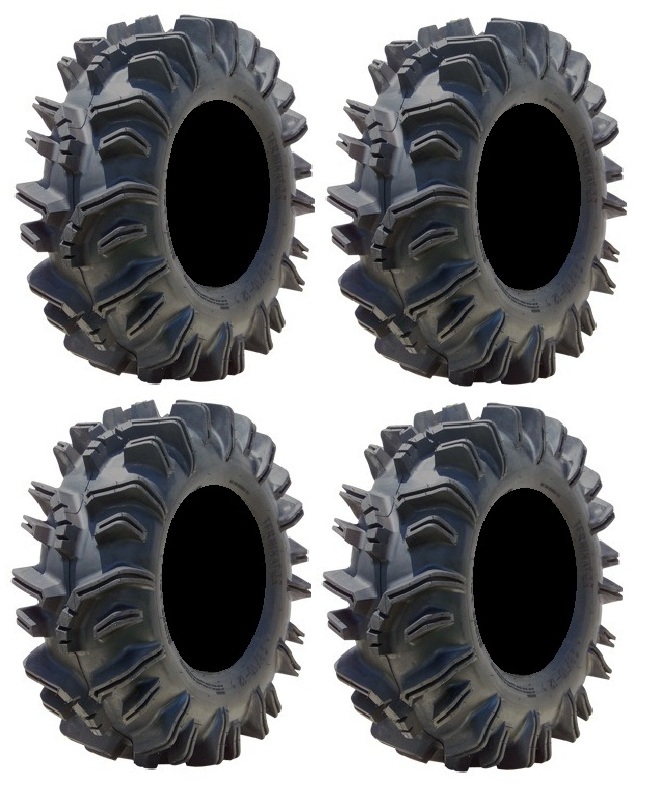
Next, you need to fasten all loose ends of chain. I like using steel shackles of the same quality as the chains. If this is not enough to keep the bike’s chains clear, you are left with installing wheel spacers. These are aluminum plates or special spacer bolts that bolts between the bike’s wheel hub and tire, moving the tire outwards.
I use 2″ spacers on all four wheels on my bike but could get by with 1 1/2 inch spacers only on the front wheels.
Another scenario when you risk damaging your bike by running chains is when the tires are spinning, then all of a sudden, they catch and regain full traction. This puts a lot of stress on the quad’s CV joints, and as most ATV owners will learn at some point, these things are not indestructible.
Winner: Studs
Chains can be installed and removed in a matter of minutes. It may take a bit longer the first couple of times, but it’s a relatively fast and easy procedure when you get the hang of it.
With studs, this takes a much longer time, no matter how much you practice.
The studs are installed one-by-one, using a drill. The process is quite time-consuming.Studs are made for ice only and will wear down if you use them on harder surfaces.
This is not ideal for ATVs that are often used on a wide variety of surfaces. Not many ATV owners will ride exclusively on ice.
Chains can be used on snow, ice, slush, gravel, and even on hard surfaces if you ride slow.
Winner: Chains
Studs with proper threads will handle almost any speed. This ability is what makes them so great for ice racing. Get threads as big/deep as your lugs allow.
Chains, however, do not handle higher speeds very well. They weigh quite a bit, and the momentum of high speed may have them disintegrate. Anything above 5-10 mph involves significant risk.
The force of a broken link breaking loose from the tire at speeds above 20mph will send it straight through your plastic fenders. If the piece then proceeds to hit you, it may inflict severe injury.
If the piece then proceeds to hit you, it may inflict severe injury.
Some claim that a new set of chains can handle higher speeds, but you will face balance issues due to the chains losing their shape even if they do not break.
Winner: Studs
Both chains and studs will wear fast if you use them on hard surfaces like concrete or asphalt. Riding at higher speeds makes it even worse.
Ideally, it would be best if you did not have to ride on hard surfaces at all when you have chains on. Just one season with regular rides on asphalt may be enough to wear them down completely.
However, if you only ride in the snow, a good set of quality chains may last you a lifetime if you repair broken links and don’t misuse them too badly.
Some use ordinary hex metal plate screws as studs. This is cheap and will work fine if you ride only on ice. But any riding on asphalt or concrete will soon wear the studs down so that they lose almost all grip.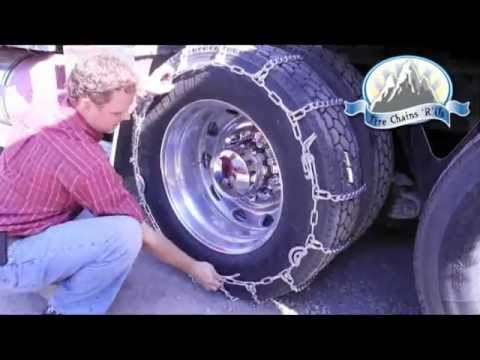
This is why purpose-made studs have carbide tips that will last a lot longer before they wear down. They are a bit more expensive than ordinary screws but will last a lot longer.
The purpose-made studs also have much more aggressive threads, so they will not come loose as quickly as the screws. Regardless of what style you choose, expect that a stud comes loose now and then. Luckily it is fast and cheap to add more studs when you need to.
I prefer the “ice auger” style of threads as these can take a beating without coming loose.
These threads can handle a beating before coming loose.Winner(s):
Chains are not exactly known for improving ride comfort.
Diamond-shaped chains will, however, rattle your teeth a lot less than the basic 2-link V-bar chains.
As long as speeds are kept low, you should have no issues. I call a tie when it comes to riding comfort as both chains and studs are plenty comfortable for their intended use.
What if neither chains or standard tirestuds meet your need?
Some riders prefer to sacrifice a set of tires and install beefier “studs” using 3/8 stove bolts that go straight through the tire with a washer on each side.
You can decide how long the bolt should be according to your need. Some leaves as much as 1 inch of each bolt sticking out.
Compared to running chains, this DIY setup has the advantage of no loose chain-ends flying around. You can ride faster with less risk of damage, as long as the bolts are fastened securely.
Skipping chains and studs altogether is a viable option for many riders that don’t like some of the disadvantages of having them.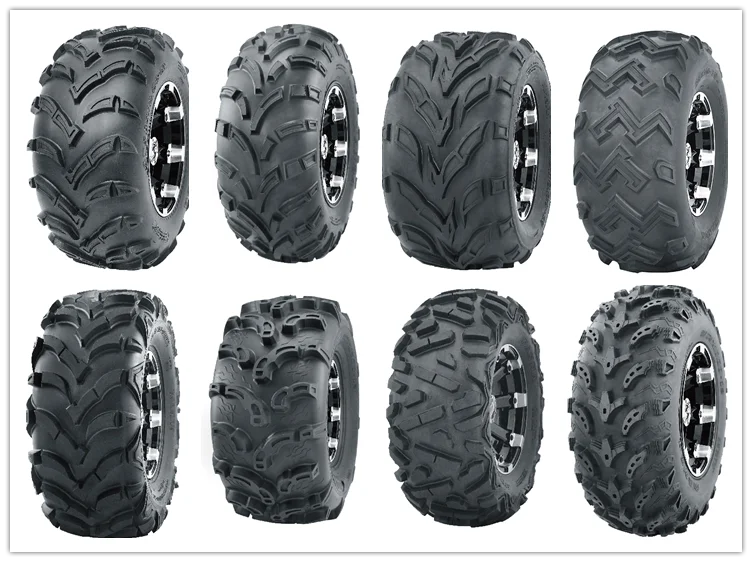 For riding on packed snow, most ATV tires will deliver decent traction.
For riding on packed snow, most ATV tires will deliver decent traction.
Especially for those that only need to plow their relatively flat driveway a few times each year and don’t want to scratch it, you will likely get by.
Get a set of good quality tires with a soft rubber blend like the IPT Mud Lites, and strap on a couple of sandbags, and you should be able to handle quite a bit of snow before having issues.
Taking several small passes with the plow may also be enough so that you don’t need to risk scratching your driveway.
If you don’t like the idea of studding your summer tires, it may be worth looking into the ITP TundraCross Studded ATV Tires. These come pre-studded from the factory and features a tread pattern and rubber blend that suits winter use well.
A good option that some prefer is installing chains on the back tires and studs upfront. To some degree, this will give you the best of both worlds, with less risk of damaging the bike.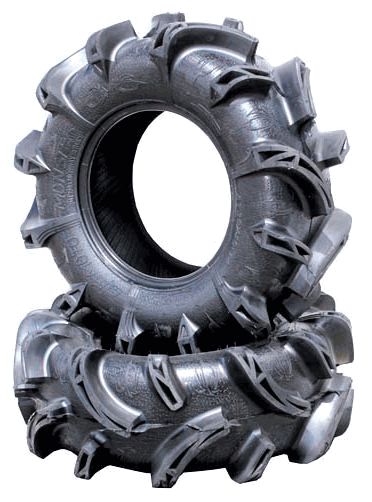
For moderate to deep snow, nothing can beat a set of good ATV tracks. If you expect a lot of deep snow riding, you might as well skip straight to what’s most likely to satisfy your needs.
Yes, you can put studs in almost all ATV tires. They are installed in the tire lugs. Make sure you get the right type and length of studs.
Yes, most quality studs can be removed using the same tool that’s used to install them.
For all-purpose use in areas with a good solid winter, a set of ATV tire chains is definitely worth it. It’s better for those who only get the occasional snowfall to get a set of quality ATV winter tires.
ATV tire studs are screwed right into the tire’s lugs to give a better grip on ice. They do not work well on snow. A carbide tip on each stud reduces wear.
The number of studs you should use depends on how many lugs the tire has and the expected usage.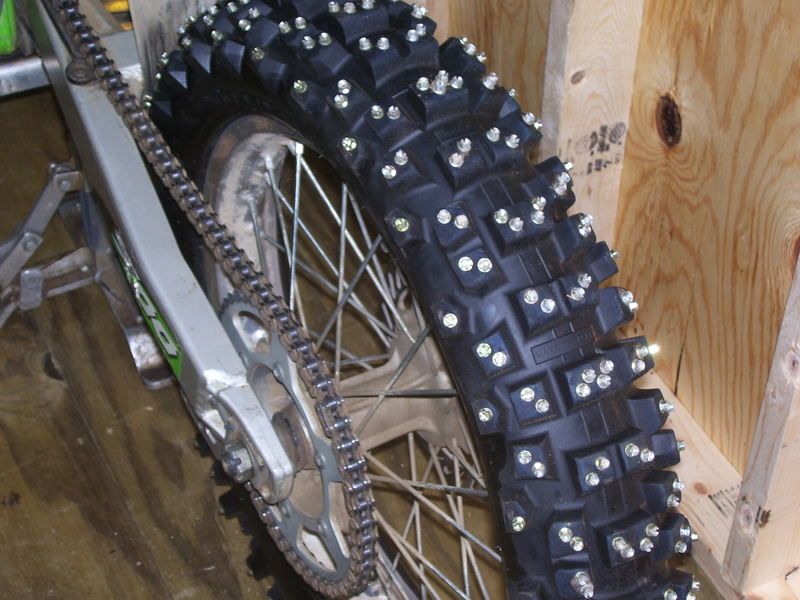 One stud pr lug is a good starting point. With more oversized lugs, one can consider installing two studs per lug.
One stud pr lug is a good starting point. With more oversized lugs, one can consider installing two studs per lug.
Very few manufacturers produce dedicated snow tires for ATVs. They do give extra traction on snow, but they are expensive. A mud tire with a soft rubber compound will likely do just as well of a job for most riders.
FREE
SHIPPING
ON ALL ORDERS
Sold in pairs (two pieces)
$194.91

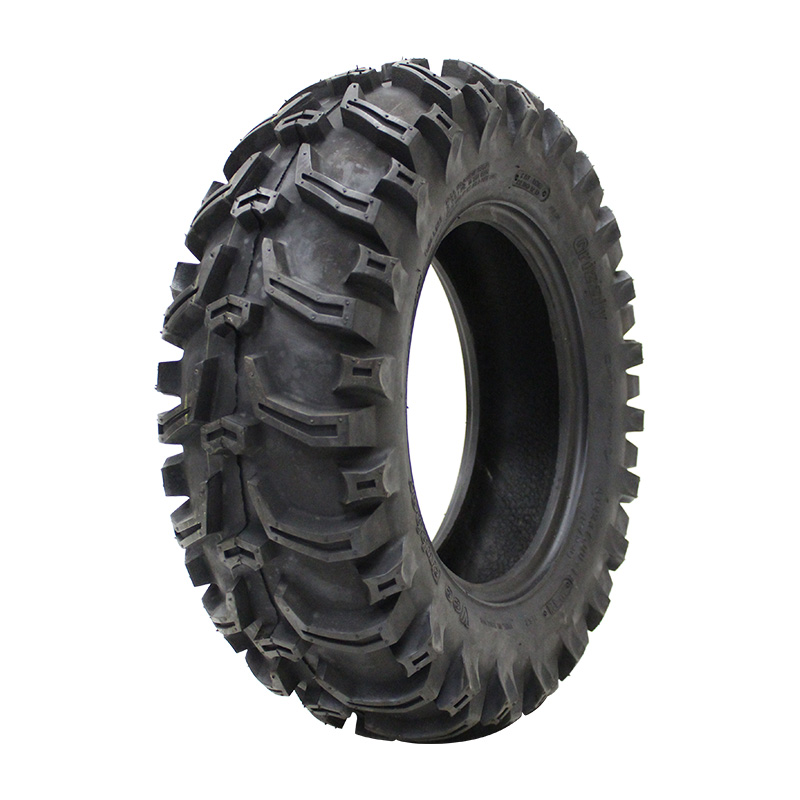 Adjustments/Alterations are normal and expected.
Adjustments/Alterations are normal and expected.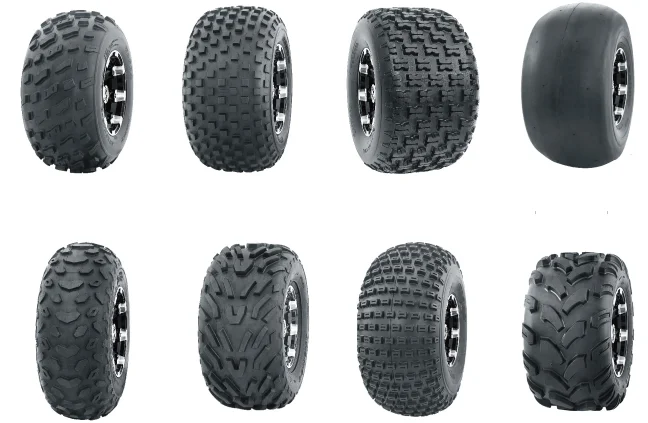
FAQ on ATV Snow Tire Chains What is the difference between 2 and 4 link spacing? Spacing is defined as the number of side chain links skipped between cross chains. For 2 link spacing, cross chains occur every 2 side chain links. For 4 link spacing, cross chains occur every 4 side chain link.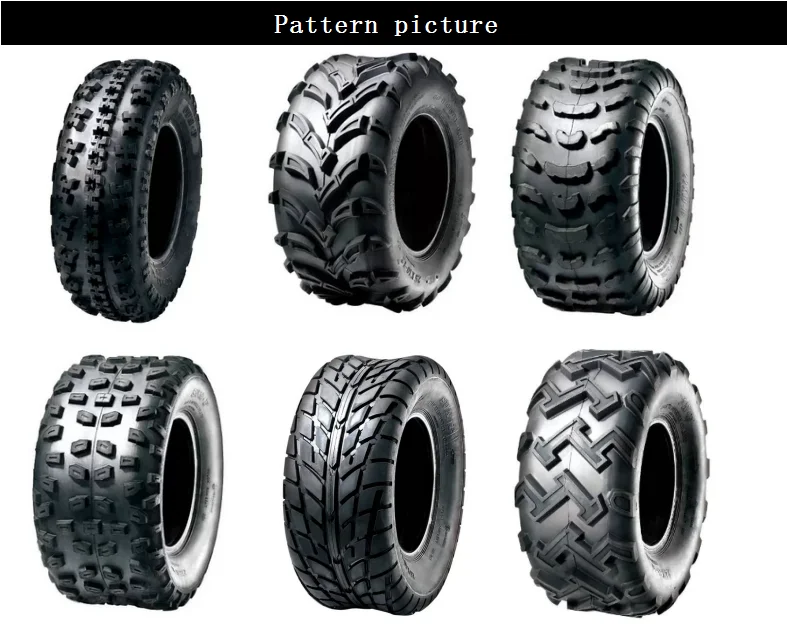 Which is better 2 or 4 link spacing atv tire chains? 2 link is always better. It provides for a more consistent ride by having more chain on the face of the tire. Therefore, helping to reduce the bumpy ride from being on chain - off chain. 2 link is always recommended for steering tires, since it allows more steering control. Why are ATV tire chains only available in V-Bar? V-bar ATV tire chains are helpful on hill, ice and hard packed conditions. V Bar or Studded ATV Chains are not recommended on pavement since they can damage the surface it the tires begin to spin. Which tire chain style provides the best traction?Studded Diamond ATV Snow Chains are the best. 2 link is the next. For deep tread which style is recommended? 2 link is better than 4 link. Studded or Non Studded Diamond ATV-UTV Chains are the best for keeping the chain on top deep lugs. Do I have enough clearance between the tire, struts, or control arms? Check your your owner's manual, vehicle manufacture or dealer to confirm adequate clearance.
Which is better 2 or 4 link spacing atv tire chains? 2 link is always better. It provides for a more consistent ride by having more chain on the face of the tire. Therefore, helping to reduce the bumpy ride from being on chain - off chain. 2 link is always recommended for steering tires, since it allows more steering control. Why are ATV tire chains only available in V-Bar? V-bar ATV tire chains are helpful on hill, ice and hard packed conditions. V Bar or Studded ATV Chains are not recommended on pavement since they can damage the surface it the tires begin to spin. Which tire chain style provides the best traction?Studded Diamond ATV Snow Chains are the best. 2 link is the next. For deep tread which style is recommended? 2 link is better than 4 link. Studded or Non Studded Diamond ATV-UTV Chains are the best for keeping the chain on top deep lugs. Do I have enough clearance between the tire, struts, or control arms? Check your your owner's manual, vehicle manufacture or dealer to confirm adequate clearance. Click here for a picture of a clearance problem. Why should I pay more for TireChain.com ATV Studded Tire Chains? We have 2 studs per link, theirs has 2 studs every other link. Ours is zinc coated, theirs is clear coated. Ours is thicker
Click here for a picture of a clearance problem. Why should I pay more for TireChain.com ATV Studded Tire Chains? We have 2 studs per link, theirs has 2 studs every other link. Ours is zinc coated, theirs is clear coated. Ours is thicker
ATV Studded Snow Chains by TireChains.com Studded Tire Chains Important: Compare to Competitors - Make sure you get two studs per link. Our Studded tire chains have 2 studs per link. Other brands, have as few as 2 studs every other link. Our oversized studs penetrate ice, frozen ground for ultimate traction in snow and mud. Floating Diamond Tire Chains pattern protects the tire. Visit TireChain.com for details. http://www.tirechain.com/ATV-Studded-Tire-Chains.html
Total Price:
Add All to CartPlease choose options for all selected products
Maverik » Feb 21, 2015, 11:16
On one site I saw an advertisement for studs that can be put in when you need to, and when you don’t need to, remove them from tires. That is, for winter it will not be necessary to look for spikes. Has anyone seen spikes like this? How secure are they?
That is, for winter it will not be necessary to look for spikes. Has anyone seen spikes like this? How secure are they?
Back to top
Back to top
Merk » Feb 21, 2015, 11:34 am
I have seen such studs for a long time in one of the online stores. First of all, I want to note the high price of such spikes. For the price, at least one studded tire comes out (with about the same number of studs). Who has a desire - you can put. It's just not recommended to shoot.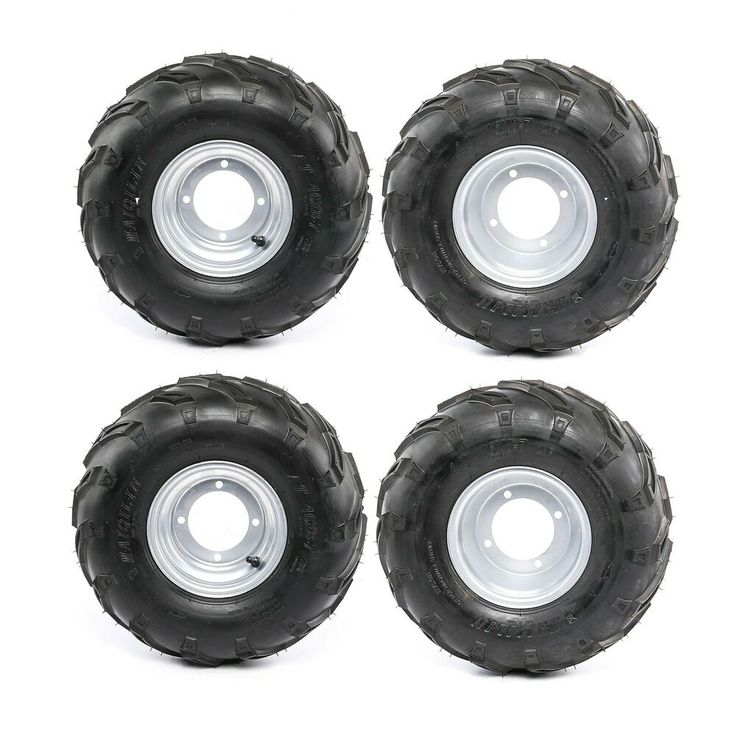 Despite the manufacturer's statements, it is better not to remove them.
Despite the manufacturer's statements, it is better not to remove them.
Back to top
Rihard » 21 Feb 2015, 21:45
A friend just screwed in the screws and smeared the attachment point with glue. I rode a little on the knurled snow and there were no “thorns”. Plus I had to change all the tires. With such removable spikes, the situation is about the same. They will hold better than self-tapping screws, but they will still fly off faster.
Back to top
Pacman » Feb 21, 2015, 10:00 pm
When preparing for winter on the very first quad with a friend, we decided to install the studs ourselves. They didn’t buy a spike because just individual spikes were offered to us at a low price and of normal quality. You can ride. With straight arms, it turns out no worse than studded rubber. We just didn't want to take them off. Then we bought other tires, but left these ones like that. Too much time is spent on them.
They didn’t buy a spike because just individual spikes were offered to us at a low price and of normal quality. You can ride. With straight arms, it turns out no worse than studded rubber. We just didn't want to take them off. Then we bought other tires, but left these ones like that. Too much time is spent on them.
Back to top
Fizik » 22 Feb 2015, 15:08
Probably many people are interested in self-installation of studs on tires. I also once decided to put it myself. The neighbor looked, said that I would change the tires very quickly. The spikes were inserted without any problems, it seems to be reliable. I rode well for half a day, looked at the condition of the tires in the garage. The neighbor was right. More than half of the spikes flew out and in some places the rubber was noticeably damaged at the attachment points.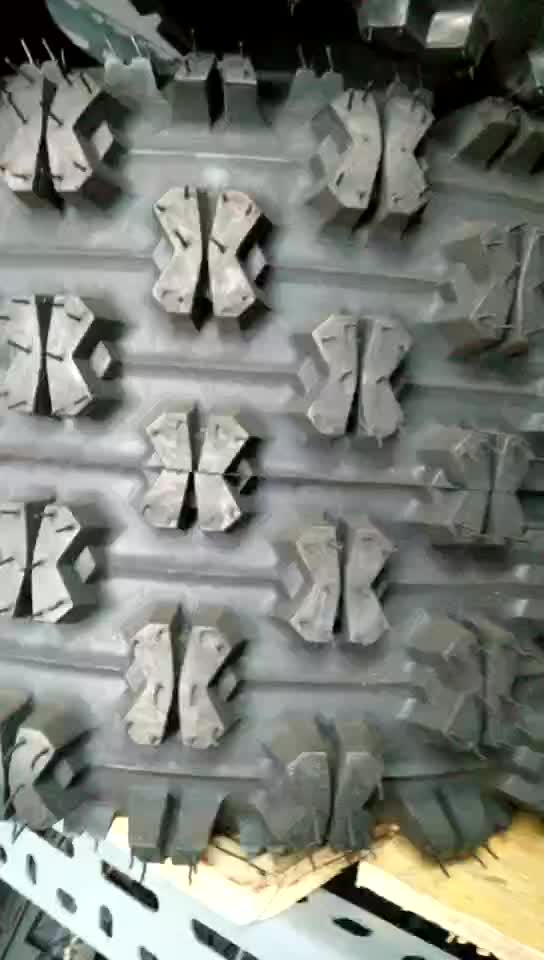 It's good that the tires were old and there was a new set in the garage.
It's good that the tires were old and there was a new set in the garage.
Back to top
Magin » 22 Feb 2015, 15:18 For the cost, it might be a little cheaper and come out. But you need to take into account the cost of time. And although later the spikes can be removed and re-installed next winter, practice shows that either the tires change by the second season, or the spikes no longer hold as firmly as they did the first time. Therefore, in fact, there is no saving at all.
Back to top
Return to ATV tuning, with your own hands, to ATV tuning studio
Jump: Select the forum -------------------------------------------------------- ATVs of traffic ATVs, announcements of mud competitions, racing, discoveries assistance to beginner quadocyclists, advice of experienced guru communities of ATV ATV ATV ATV communities , find a company for ATV rides Club quad rides, quad bike clubs unite and communicate on kvadro. guru service "Tuning ATVs, do it yourself, in the tuning studio of ATVs" Children's ATVs, the choice of atv for a child "Sports ATVs, the choice of buying and maintaining sports ATVs" Homemade ATVs, ATVs with your own hands, building a friend for yourself and GPS equipment ATV gear, durable reliable offroad clothes0209 class="block header">
guru service "Tuning ATVs, do it yourself, in the tuning studio of ATVs" Children's ATVs, the choice of atv for a child "Sports ATVs, the choice of buying and maintaining sports ATVs" Homemade ATVs, ATVs with your own hands, building a friend for yourself and GPS equipment ATV gear, durable reliable offroad clothes0209 class="block header"> Users browsing this forum: no registered users and guests: 1
12/08/2015
Very often you can hear drivers talking about studded tires in a not very favorable light. But what can you do? Indeed, without it in our harsh winters simply can not do. Practice has already proven that it is studded tires that allow you to stop on a frozen road in a timely manner and give the vehicle better handling characteristics, while allowing you to avoid skidding when making turns or in dangerous sections of the road. But there is one problem - the purchase of such rubber with metal inserts that are installed at the factory will require a lot of money to be invested, which some families cannot afford.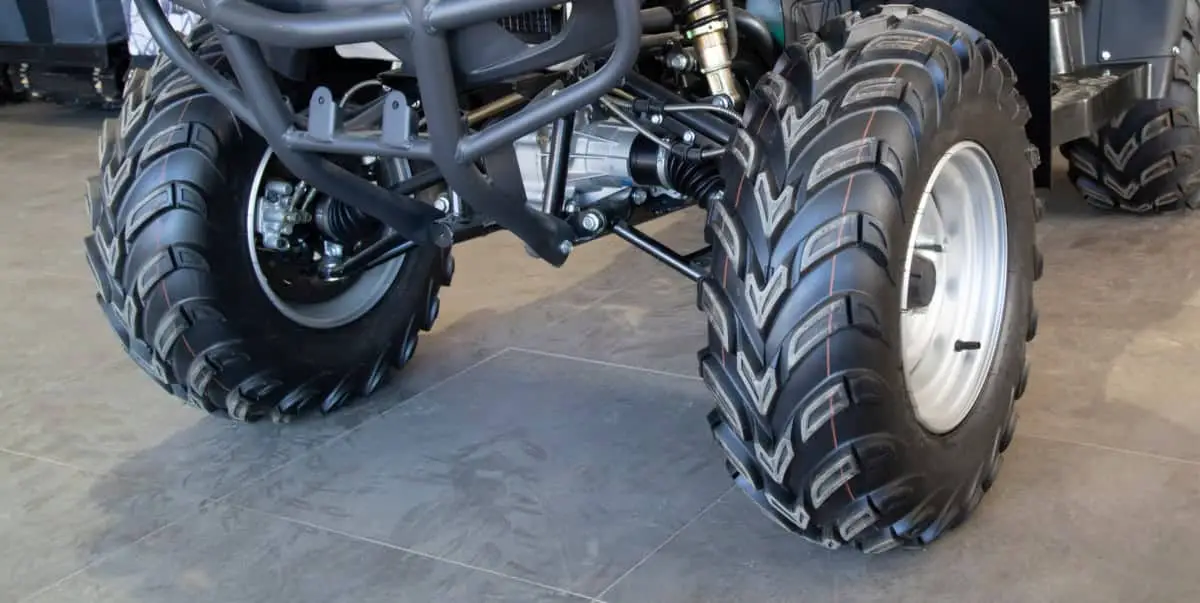 Then the only way out of such a difficult situation will be to perform independent tire studding. This is a way not only to save money, but also to learn the characteristics of the wheels. Are studded tires made by hand reliable? Do they meet all safety requirements? The answers will be given later in this article.
Then the only way out of such a difficult situation will be to perform independent tire studding. This is a way not only to save money, but also to learn the characteristics of the wheels. Are studded tires made by hand reliable? Do they meet all safety requirements? The answers will be given later in this article.
Spike base: what should it be?
Studding is allowed only on winter tires, as they have a higher rubber density that can hold metal products. It is better to stop your choice on rubber, equipped with special holes for mounting spikes. This option will be more durable and practical. Before buying them, it is worthwhile to conduct a thorough check - to determine the uniformity of the location of the nests (in the complex they must form a certain pattern). Otherwise, there is a high probability of buying fake products that are not able to provide proper safety and reliability.
Important! Do-it-yourself tire studding is only necessary on new tires. This is due to the fact that when they are worn, the reliability of fixing metal inserts in broken mounting holes will not be ensured.
This is due to the fact that when they are worn, the reliability of fixing metal inserts in broken mounting holes will not be ensured.
Of course, it is theoretically possible to perform studding on ordinary rubber, in which there are no special recesses. But then there is a risk of damage to the new product up to its final unusability. In addition, it is worth noting that the sockets for the spikes are made only with the help of expensive equipment, which includes a drill with flexible adjustment of the spindle speed, a tubular hollow drill. For the rest of the work, it is possible to use various types of equipment for tire studding - the choice of one or another type depends only on the needs and desires.
Fixation of studs
It is possible to fix studs to rubber in several ways, each of which has its own characteristics:
Exclusively manual fixation. To do this, you need a special key, a hammer and a screwdriver. The advantage of this option is the availability of execution to everyone. The downside is a lot of work.
The advantage of this option is the availability of execution to everyone. The downside is a lot of work.
Semi-automatic fastening involves screwing in metal inserts using a drill or a screwdriver with a special nozzle. The speed of work here is somewhat higher, but careful monitoring of the correct location of each spike is required.
Automated installation uses a pneumatic gun that drives in spikes under tremendous pressure. This not only ensures the strength of fixation, but also reduces the complexity of the process. The disadvantage in this case is the high cost of the required equipment.
Which of the proposed methods to choose is everyone's business. But one thing is clear: buying an air gun for the sake of studding the tires of one bike will most likely be irrational. It will come in handy only if there are several motorcycles in the family, or a business organization. According to experts, the best option for the process of fixing the inserts is the semi-automatic method.
Tip! The tire for spikes should be pre-treated with soapy water. This will clean it of dirt and facilitate the process of entering the spike into the recess.
Cleaning can be done with a household sponge, but it is more preferable to use a pneumatic sprayer for this purpose, which allows the solution to penetrate deeper into the holes. Studding winter tires should be done as carefully as possible, carefully monitoring the uniformity of applying metal products. In case of erroneous installation of the spike, it can be removed with pliers, swinging movements.
Which spikes to choose?
There are many different inserts for winter tires. Their choice should be treated especially responsibly and with knowledge. For our area, where there are only two problems - fools and roads, it is worth giving preference towards products made of iron-containing alloys. So, for example, aluminum inserts will be deformed immediately after a one-time drive along a country road with multiple bumps and pits.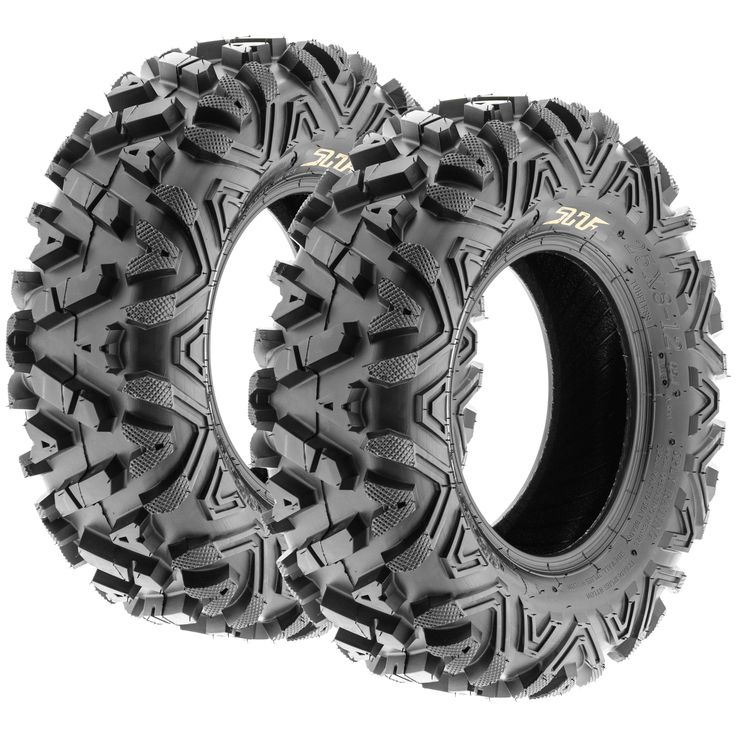
The next thing to look for when buying tire studs is the shape of the carbide tip, which is visible from the outside. Ordinary spikes with a round end have a fairly low cost, but their efficiency cannot reach the proper level. So, for example, four or multifaceted spikes sold in many northern European countries are able to ensure the stability of driving even with ice. Recently, diamond spikes have become so popular. They got this name not because of the material of their manufacture (no, in their composition one cannot find an expensive stone loved by women), but due to the complexity of the shape of the tip, which imitates the structure of a crystal.
Many motorcyclists are also interested in the required number of stud flanges. The answer in this case is quite simple: lovers of active driving should give their preference to two-flange options, which have more stable characteristics when driving at high speeds and making sharp maneuvers. Single-flanged models have a lower cost and long wear, but in the case of active driving, the loss of studs is inevitable.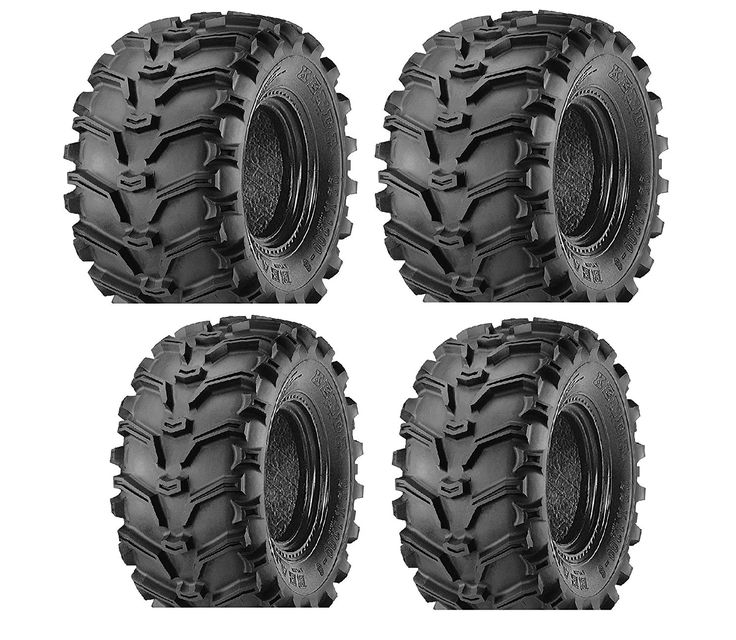
Important! When choosing spikes, it is necessary to pay attention to their dimensions: the maximum allowable protrusion of the metal head above the tire is 1.3 mm. In this regard, it is better to make a purchase of studs at the same outlet where winter tires were purchased: without “trying on” one of them, it is impossible to draw a conclusion about the suitability of the size. It is also not desirable to purchase a large number of metal inserts. After all, the law on the possible permissible number of spikes per linear meter will soon come into force: their number should not exceed 60 pieces. This means that for a wheel size R13 mounting 90 inserts, and for R16 - 150.
The final stage
After the end of the studding process, they are carefully checked for the presence of skewed inserts and too protruding tips. The first problem is solved by extracting them with pliers. And spikes that do not meet the standard dimensions are simply driven in.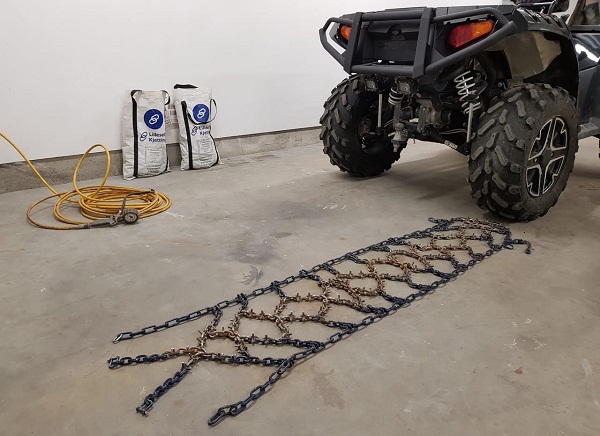 To do this, you only need a hammer and a small metal plate that will allow you to distribute the impact energy.
To do this, you only need a hammer and a small metal plate that will allow you to distribute the impact energy.
Important! After the final completion of the studding process, the rubber should be left at rest for a while: for 1-2 weeks. This will ensure the maximum density of the grip of the tires, contributing to an increase in the strength of their fastening. After installing studded tires, they should be run in a little - namely, drive the first hundreds of kilometers only at speeds up to 80 km / h, without making sharp maneuvers and active starts. Do not worry if several spikes are lost during the break-in process - they will not have a special effect on the stability of the car in ice.
Winterizing yourself
As you can see, you don't have to buy studded tires - you can make them yourself. Only for this it is worth using a new rubber with the necessary preparation, as well as paying special attention to the selection of suitable spikes that would have the necessary tip parameters.